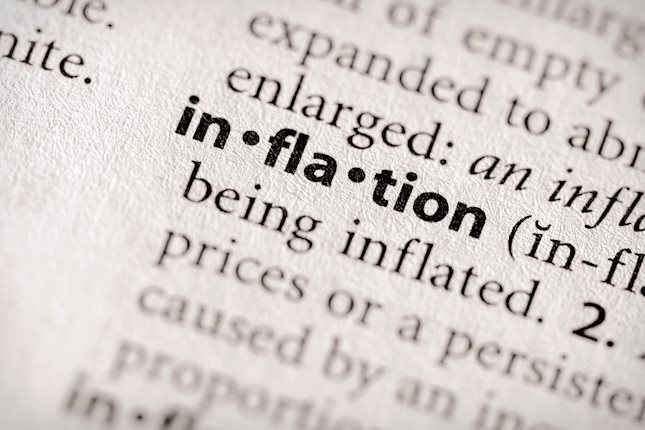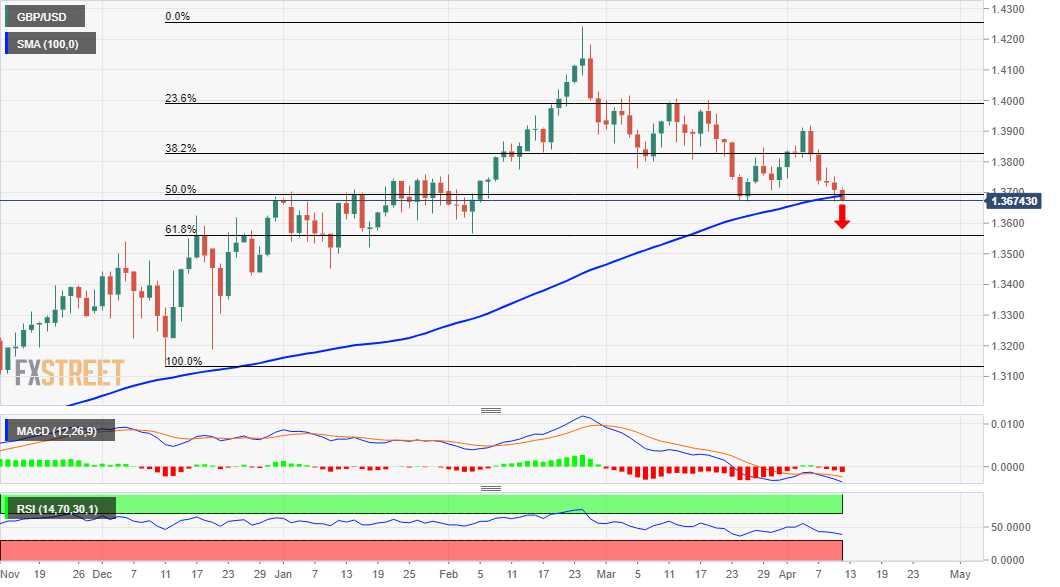- A modest pickup in the USD demand kept GBP/USD depressed through the Asian session.
- Worries about the AstraZeneca vaccine and unrest in N. Ireland further weighed on the GBP.
- The set-up favours bearish traders and supports prospects for a further near-term decline.
The GBP/USD pair dropped to over two-month lows on Friday and was pressured by a combination of factors. A possible link between the AstraZeneca coronavirus vaccine and a rare blood clotting disorder forced the UK's medical regulator to issue a temporary ban on the jab for the below 30 age group. The development could delay the UK government's plan to reopen the economy, which, in turn, acted as a headwind for the British pound. Another factor that weighed on the sterling was the latest unrest in Northern Ireland. Unionist politicians strongly object to how the Brexit deal’s Northern Ireland protocol treats their region differently from the rest of the UK.
Apart from this, a modest pickup in the US dollar exerted some additional downward pressure on the major, though bulls, managed to defend the 100-day SMA support, at least for the time being. The USD remained well supported following the release of the hotter-than-expected US Producer Price Index, which recorded the largest annual gains in 9-1/2 years in March. This added to the market speculations about a possible uptick in US inflation amid the impressive pace of coronavirus vaccinations and US President Joe Biden's over $2 trillion infrastructure spending plan. This, in turn, raised doubts that the Fed will retain ultra-low interest rates for a longer period.
The USD got an additional lift from the Fed Chair Jerome Powell's upbeat comments over the weekend and seemed rather unaffected by a softer tone surrounding the US Treasury bond yields. During an interview with 60 Minutes, Powell said that the US economy is set to make a turnaround and increased growth should provide more jobs. This reinforced the optimism about a relatively faster US economic recovery from the pandemic. Powell further added that the Fed wants inflation moderately above 2% for some time but does not want it to go materially above 2%. Hence, the market focus will remain glued to the latest US consumer inflation figures, scheduled for release on Tuesday.
Meanwhile, a slight deterioration in the global risk sentiment further drove some haven flows towards the safe-haven USD. Israeli study released on Saturday indicated that South African COVID-19 mutant may beat the Pfizer vaccine. This, along with news that one of Iran's nuclear facilities was hit by a terrorist act, further dented investor’s appetite for riskier assets and benefitted perceived safe-haven currencies. The pair was last seen trading just below the 1.3700 mark and remains at the mercy of the USD price dynamics amid absent relevant market-moving economic releases, either from the UK or the US.
Short-term technical outlook
From a technical perspective, the pair has now found acceptance below the 50% Fibonacci level of the 1.3135-1.4243 move up. A subsequent slide below the 100-day SMA favours bearish traders and supports prospects for an extension of the recent downward trajectory. Hence, some follow-through weakness towards the 1.3635-25 intermediate support, en-route the 1.3600 mark, looks a distinct possibility. The downfall could further get extended towards the 61.8% Fibo. level, around the 1.3560-55 region.
On the flip side, any meaningful bounce back above the 1.3700 mark is likely to confront stiff resistance near the 1.3735 supply zone. A sustained strength beyond might prompt some short-covering move and assist the pair to reclaim the 1.3800 mark. This is followed by the 38.2% Fibo. level, around the 1.3825-30 region, which if cleared decisively will negate the near-term negative bias. Thep air might then accelerate the momentum back towards the 1.3900 mark before eventually climbing to monthly tops, around the 1.3920 area.
Information on these pages contains forward-looking statements that involve risks and uncertainties. Markets and instruments profiled on this page are for informational purposes only and should not in any way come across as a recommendation to buy or sell in these assets. You should do your own thorough research before making any investment decisions. FXStreet does not in any way guarantee that this information is free from mistakes, errors, or material misstatements. It also does not guarantee that this information is of a timely nature. Investing in Open Markets involves a great deal of risk, including the loss of all or a portion of your investment, as well as emotional distress. All risks, losses and costs associated with investing, including total loss of principal, are your responsibility. The views and opinions expressed in this article are those of the authors and do not necessarily reflect the official policy or position of FXStreet nor its advertisers. The author will not be held responsible for information that is found at the end of links posted on this page.
If not otherwise explicitly mentioned in the body of the article, at the time of writing, the author has no position in any stock mentioned in this article and no business relationship with any company mentioned. The author has not received compensation for writing this article, other than from FXStreet.
FXStreet and the author do not provide personalized recommendations. The author makes no representations as to the accuracy, completeness, or suitability of this information. FXStreet and the author will not be liable for any errors, omissions or any losses, injuries or damages arising from this information and its display or use. Errors and omissions excepted.
The author and FXStreet are not registered investment advisors and nothing in this article is intended to be investment advice.
Recommended Content
Editors’ Picks

EUR/USD trades deep in red below 1.0300 after strong US jobs report
EUR/USD stays under bearish pressure and trades below 1.0300 in the American session on Friday. The US Dollar benefits from the upbeat jobs report, which showed an increase of 256,000 in Nonfarm Payrolls, and forces the pair to stay on the back foot heading into the weekend.

GBP/USD drops toward 1.2200 on broad USD demand
GBP/USD extends its weekly slide and trades at its weakest level since November 2023 below 1.2250. The data from the US showed that Nonfarm Payrolls rose by 256,000 in December, fuelling a US Dollar rally and weighing on the pair.

Gold ignores upbeat US data, approaches $2,700
Following a drop toward $2,660 with the immediate reaction to strong US employment data for December, Gold regained its traction and climbed towards $2,700. The risk-averse market atmosphere seems to be supporting XAU/USD despite renewed USD strength.

Sui bulls eyes for a new all-time high of $6.35
Sui price recovers most of its weekly losses and trades around $5.06 at the time of writing on Friday. On-chain metrics hint at a rally ahead as SUI’s long-to-short ratio reaches the highest level in over a month, and open interest is also rising.

Think ahead: Mixed inflation data
Core CPI data from the US next week could ease concerns about prolonged elevated inflation while in Central and Eastern Europe, inflation readings look set to remain high.

Best Forex Brokers with Low Spreads
VERIFIED Low spreads are crucial for reducing trading costs. Explore top Forex brokers offering competitive spreads and high leverage. Compare options for EUR/USD, GBP/USD, USD/JPY, and Gold.
